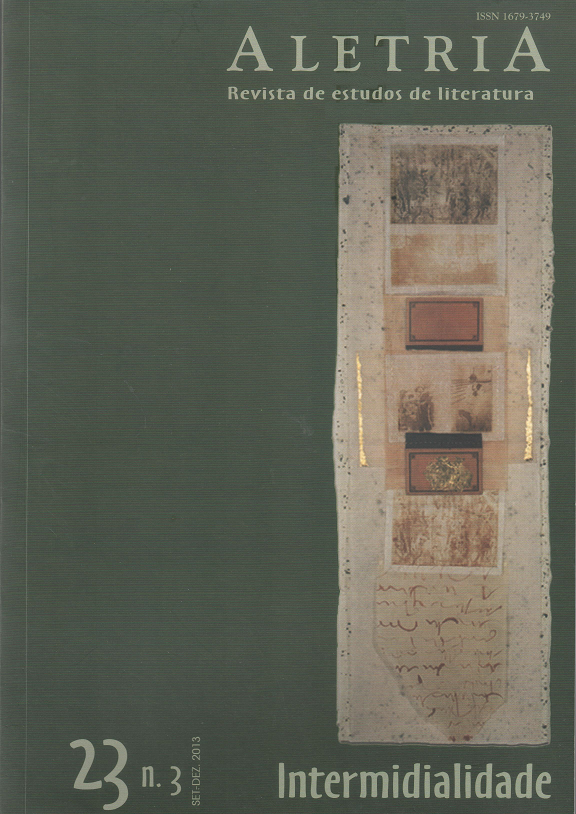The Metamorphoses of the Monster: Images of the Thing in Film and Popular Literature
DOI:
https://doi.org/10.17851/2317-2096.23.3.99-112Keywords:
identity, fluidity, film, monstrosity, utopiaAbstract
In the 2010 short story “The Things”, Peter Watts offers a version of John Carpenter’s film The Thing, written from the point of view of the monster. It is one of the latest links in a chain of creation and adaptation that starts in 1938 with John W. Campbell’s story “Who Goes There?”. The shifts this story has gone through point to equivalent shifts in our conceptions of subjectivity, our fears and our desires. Perhaps most striking among these shifts is the one that turns Campbell’s creature from an object of indescribable horror into an incarnation of utopian desire, a being who seeks to bring communion to fragmented and isolated human beings. What has changed to make the possibility of being absorbed by the alien cease to be the feared extinction of the self, and become a fantasy of integration and full communication? The creature in “The Things” offers a life in perpetual flux that erases the boundaries of the self. The aim of this paper is to discuss how the changing story of the Thing may shed some light on the transformations undergone by the modern ideal of the self and its connection to the body as the locus of utopian desire. Part of this story is the spectacular explosion of the body in film images and the projection of its interior onto the surface. The transformation of the Thing into a cinematic image marks an essential point in the alterations that the notion of subjectivity has been undergoing in the contemporary world.
Downloads
References
ATTEBERY, Brian. The Magazine Era: 1926-1960. In: JAMES, Edward; MENDLESOHN, Farah (Ed.). The Cambridge Companion to Science Fiction. Cambridge: Cambridge University Press, 2003.
BERGER, Albert I. Love, Death, and the Atomic Bomb: Sexuality and Community in Science Fiction, 1935-55. Science Fiction Studies, v. 8, n. 3, p. 280-296, Nov. 1981.
BAUMAN, Zygmunt. Sociedade de consumidores. In: BAUMAN, Zygmunt. Vida para o consumo: a transformação das pessoas em mercadoria. Rio de Janeiro: Zahar, 2008. p. 70-106.
BOLLINGER, Laurel. Containing Multitudes: Revisiting the Infection Metaphor in Science Fiction. Extrapolation, Brownsville (Texas), v. 50, n. 3, p. 377-399, Sep. 2009.
CAMPBELL, JR., John W. [sob o pseudônimo Don A. Stuart]. Who Goes There?. In: DRAKE, David; FLINT, Eric; BAEN, Jim (Ed.). The World Turned Upside Down. Riverdale, NY: Baen, 2006. p. 361-414.
CARROLL, Noël. The Philosophy of Horror or Paradoxes of the Heart. New York; London: Routledge, 2004. Kindle edition.
DELEUZE, Gilles; GUATTARI, Félix. Capitalisme et schizophrénie 2: Mille plateaux. Paris: Minuit, 2009.
EMERSON, Ralph Waldo. Self-Reliance. In: LAUTER, Paul et al. (Ed.). The Heath Anthology of American Literature. Boston; New York: Houghton Mifflin, 2004. p. 707-723.
HARAWAY, Donna. A Cyborg Manifesto. In: DURING, Simon (Ed.). The Cultural Studies Reader. 3. ed. London; New York: Routledge, 2007. p. 314-334.
KRISTEVA, Julia. Powers of Horror: An Essay on Abjection. Translated by Leon S. Roudiez. New York: Columbia University Press, 1982.
LATOUR, Bruno. Jamais fomos modernos. Rio de Janeiro: Editora 34, 1994.
LEANE, Elizabeth. Locating the Thing: The Antarctic as Alien Space in John W. Campbell’s “Who Goes There?”. Science Fiction Studies, v. 32, n. 2, p. 225-239, July 2005.
MIÉVILLE, China. Weird Fiction. In: BOULD, Mark et al. (Ed.). The Routledge Companion to Science Fiction. London; New York: Routledge, 2009. p. 510-515. Kindle edition.
MILNER, Andrew; SAVAGE, Robert. Pulped Dreams: Utopia and American Pulp Science Fiction. Science Fiction Studies, v. 35, n. 1, p. 31-47, Mar. 2008.
PAIK, Peter Y. From Utopia to Apocalypse: Science Fiction and the Politics of Catastrophe. Minneapolis; London: University of Minnesota Press, 2010. Kindle edition.
RIEDER, John. Embracing the Alien: Science Fiction in Mass Culture. Science Fiction Studies, v. 9, n. 1, p. 26-37, Mar. 1982.
RICŒUR, Paul. Teoria da interpretação. Porto: Porto Editora, 1995.
SUVIN, Darko. Science Fiction and the Novum (1977). In: SUVIN, Darko. Defined by a Hollow: Essays on Utopia, Science Fiction and Political Epistemology. Oxford; Bern: Peter Lang, 2010.
THE THING. Direção: John Carpenter. Produção: David Foster et al. Roteiro: Bill Lancaster. Estados Unidos: Universal/Turman-Foster Company, 1982. DVD (109 min.), son., color.
THE THING. Direção: Matthijs van Heijningen Jr. Produção: Marc Abraham et al. Roteiro: Eric Heisserer. Estados Unidos: Morgan Creek Productions/Universal Pictures/Strike Entertainment, 2011. DVD (103 min.), son., color.
THE THING from Another World. Direção: Christian Nyby. Produção: Howard Hawks e Edward Lasker. Roteiro: Charles Lederer. Estados Unidos: Winchester Pictures Corporation, 1951. DVD (87 min.), son., p&b.
VINT, Sherryl. Who Goes There? “Real” Men Only. Extrapolation, Brownsville (Texas), v. 46, n. 4, p. 421-438, Dec. 2005.
WATTS, Peter. The Things. In: DOZOIS, Gardner (Ed.). The Year’s Best Science Fiction: Twenty-Eighth Annual Collection. New York: St. Martin’s Griffin, 2011. p. 58-71.
WHITE, Eric. The Erotics of Becoming: Xenogenesis and The Thing. Science Fiction Studies, v. 20, n. 3, p. 394-408, Nov. 1993.
Downloads
Published
How to Cite
Issue
Section
License
Copyright (c) 2013 André Cabral de Almeida Cardoso (Autor)

This work is licensed under a Creative Commons Attribution 4.0 International License.
Authors who publish with this journal agree to the following terms:Authors retain copyright and grant the journal right of first publication with the work simultaneously licensed under a Creative Commons Attribution Non-Commercial No Derivatives License that allows others to share the work with an acknowledgement of the work's authorship and initial publication in this journal.Authors are able to enter into separate, additional contractual arrangements for the non-exclusive distribution of the journal's published version of the work (e.g., post it to an institutional repository or publish it in a book), with an acknowledgement of its initial publication in this journal.Authors are permitted and encouraged to post their work online (e.g., in institutional repositories or on their website) prior to and during the submission process, as it can lead to productive exchanges, as well as earlier and greater citation of published work (See The Effect of Open Access).





